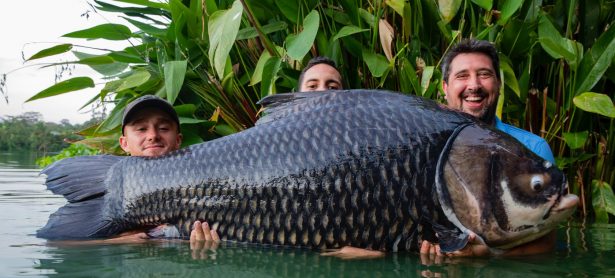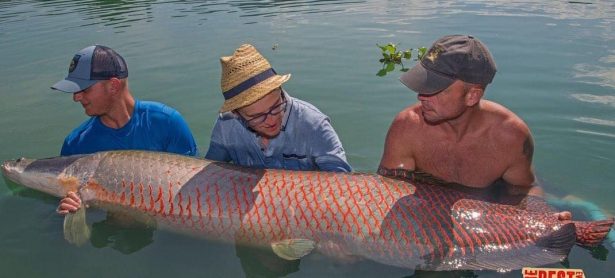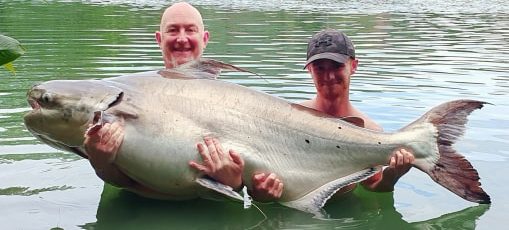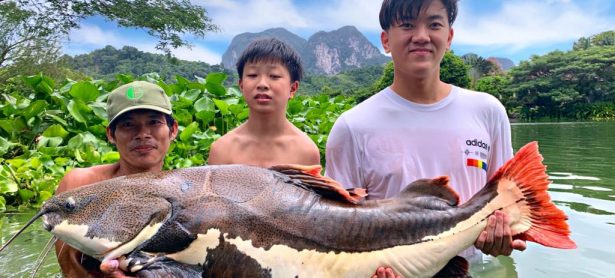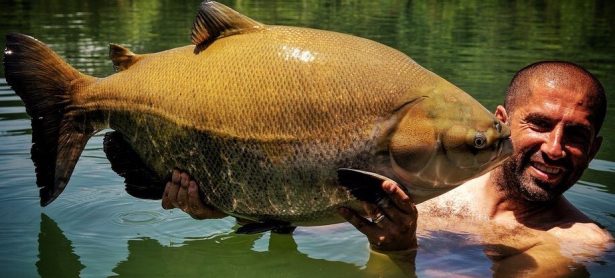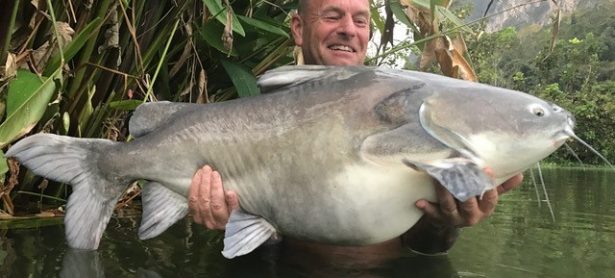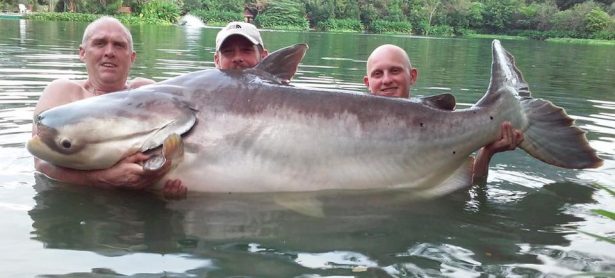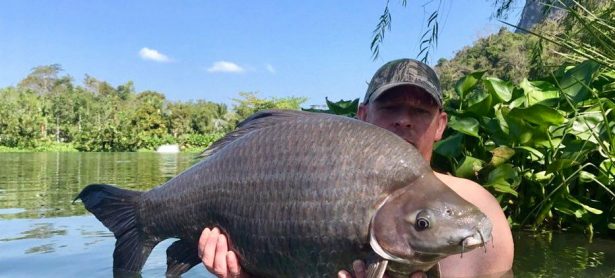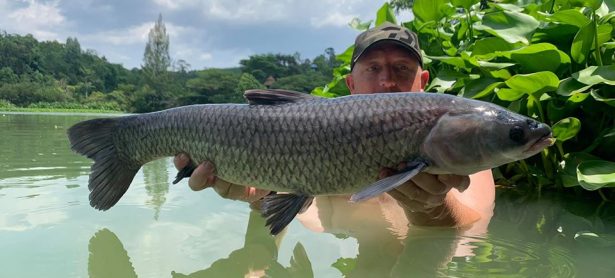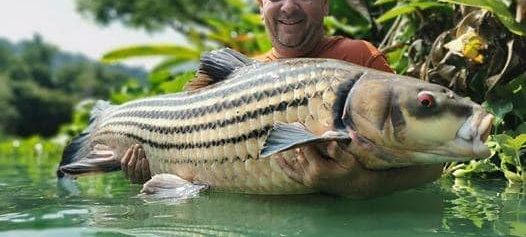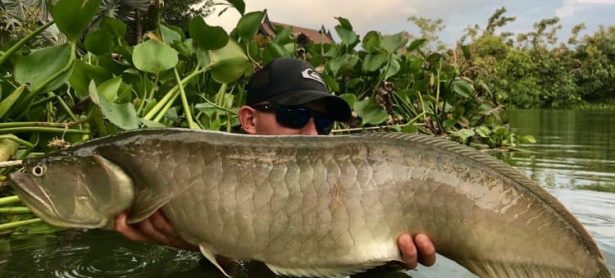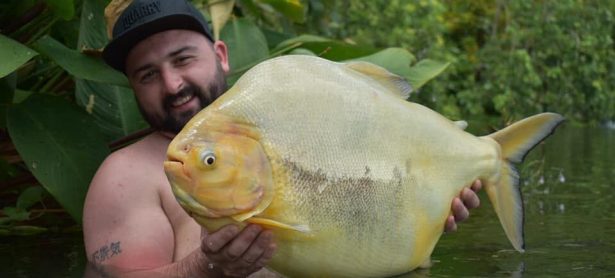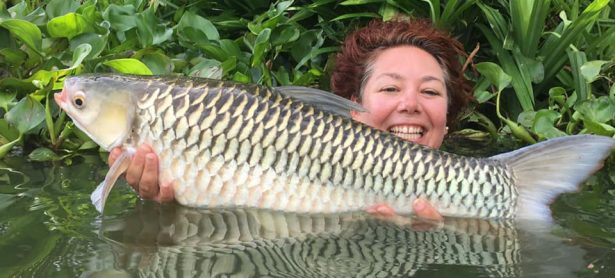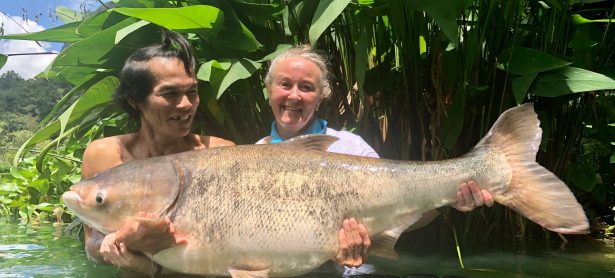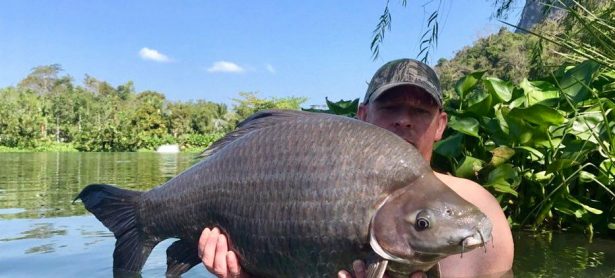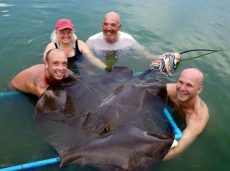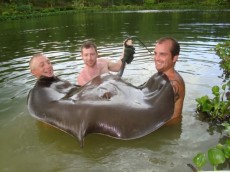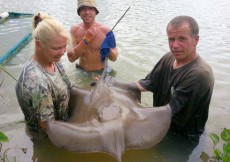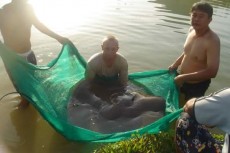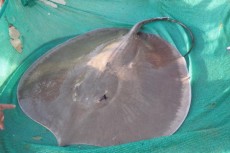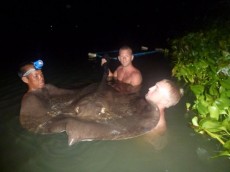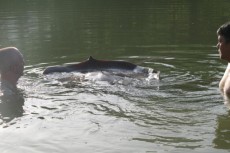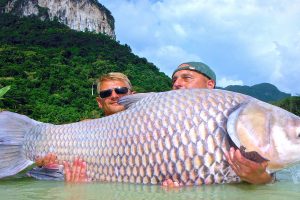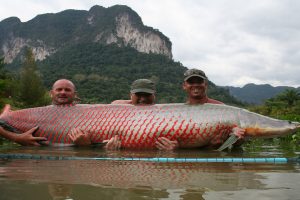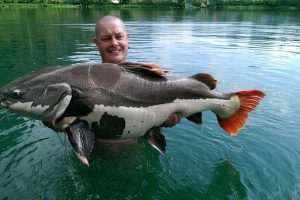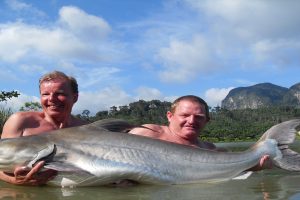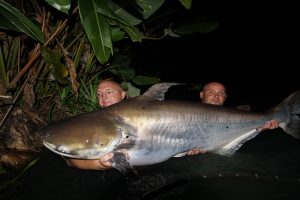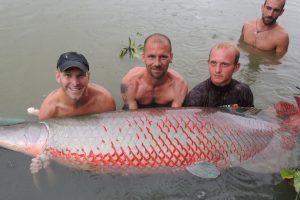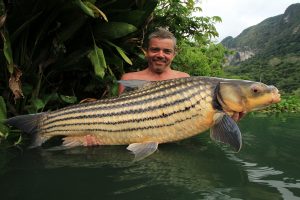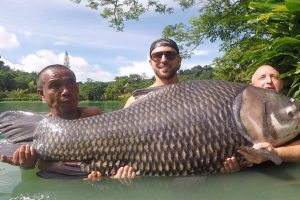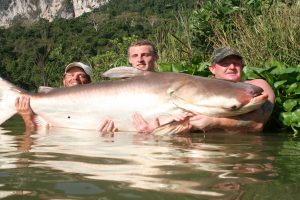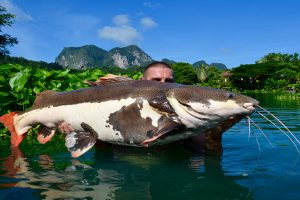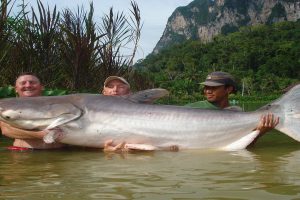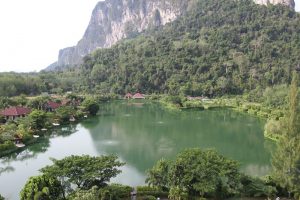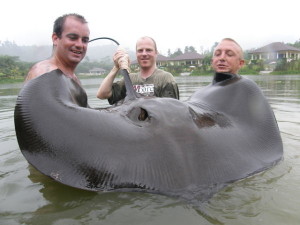 Name: Giant freshwater stingray.
Name: Giant freshwater stingray.
Species: Himantura chaophraya.
Thai name: Pla kabeng nam djut.
Max length: 3m.
Max wing span. 2.5m.
Max weight: 600kg.
IGFA record: Vacant.
Diet: Giant water snail, fish, shrimp, prawns, crustaceans, squid.
To fish for our stingray we recommend using the meat from the giant freshwater snails, or alternatively you can use very small fish sections. Use a semi-fixed lead with a backlead in conjunction with a 15in hooklink made from soft braid in a minimum 150lb bs. Hooks need to be minimum 4/0 with the barbs crushed. You will need a very powerful rod in 30/50lb class, with a strong reel loaded with minimum 150lb bs braid.
Takes come as a continuous jerking, as first the stingray settle over the bait, then as they shuffle over the bait to get the food into their small mouth. Takes from the stingray are very fast, and once they realise something is wrong they kite around, making short sharp turns, so keep the pressure on to the maximum or the stingray will lock onto the bottom. Should they do this, try walking along the bank and applying pressure from different angles to get them moving. Once the stingray is on the move, it will glide through the water at speed, so keep maximum pressure on at all times or they will go over a plateau and once again anchor to the lakebed. Each time they lock on the lakebed they are harder to move again. All the time they are sitting like this on the lakebed, they swish their razor sharp tail until eventually they hit the line and it is all over. The best areas for stingray are alongside the hyacinth beds, where they hunt for giant water snails. When you have caught one of these fish take note of our guide’s instructions on how to handle them, and do not worry – all our stingray have had their stings removed.
General facts on the giant freshwater stingray:
Freshwater stingray are brown on their upper body with a cream underside with a black edge, they have a disc shaped flat body with a whip-like tail, a long snout, very small eyes and a tiny mouth on the bottom of the head. In the wild at the end of their long whip tail they have a venomous sting like a small dagger, the sole purpose of which is for defence, and not, as rumour has it, for stunning their prey. They spawn in running water over sandy slack water areas giving birth to live young, which are born around 30cm across their wings. The mother deserts them immediately, leaving them extremely vulnerable to fend for themselves. They inhabit most large rivers and estuaries in Southeast Asia where they prefer a sandy bottom.
Their enormous size puts them up with the Mekong catfish as a serious contender for the biggest freshwater fish in the world, however they are elusive and understudied, and also they are in serious decline in Thailand due to poor habitat management including rainforest destruction leading to upstream droughts and downstream flooding in the monsoon season, along with pollution and dam construction, which stops migration and reduces available food. Couple this with overfishing and the days of the true wild monster fish are believed to be gone, but who knows, maybe a surprise is still lurking in some of Thailand’s huge river basins. Giant freshwater stingray are on the red list of endangered species in the wild, however captive breeding keeps them plentiful for commercial fisheries and the aquarium trade. Maybe one day one of Thailand’s well managed commercial fisheries will grow on a fish to rival the known monsters of old.



